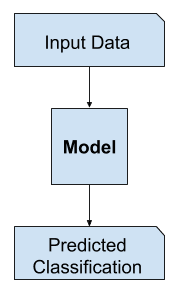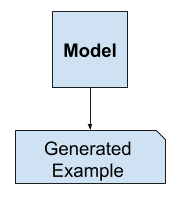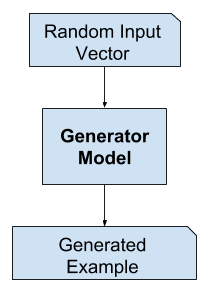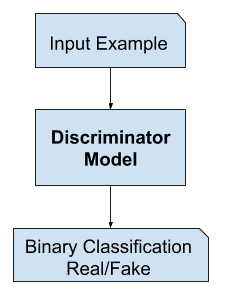Generative modeling is an unsupervised learning task in machine learning that involves automatically discovering and learning the regularities or patterns in input data in such a way that the model can be used to generate or output new examples that plausibly could have been drawn from the original dataset.
GANs are a clever way of training a generative model by framing the problem as a supervised learning problem with two sub-models: the generator model that we train to generate new examples, and the discriminator model that tries to classify examples as either real (from the domain) or fake (generated). The two models are trained together in a zero-sum game, adversarial, until the discriminator model is fooled about half the time, meaning the generator model is generating plausible examples.
GANs are an exciting and rapidly changing field, delivering on the promise of generative models in their ability to generate realistic examples across a range of problem domains, most notably in image-to-image translation tasks such as translating photos of summer to winter or day to night, and in generating photorealistic photos of objects, scenes, and people that even humans cannot tell are fake.-
In supervised learning, we may be interested in developing a model to predict a class label given an example of input variables. This predictive modeling task is called classification. Classification is also traditionally referred to as discriminative modeling. This is because a model must discriminate examples of input variables across classes; it must choose or make a decision as to what class a given example belongs.
Discriminative Modelling
Alternately, unsupervised models that summarize the distribution of input variables may be able to be used to create or generate new examples in the input distribution.
Generative Modelling
Generative Adversarial Networks, or GANs, are a deep-learning-based generative model. More generally, GANs are a model architecture for training a generative model, and it is most common to use deep learning models in this architecture. The GAN architecture was first described in the 2014 paper by Ian Goodfellow, et al. titled “Generative Adversarial Networks”.
The GAN model architecture involves two sub-models: a generator model for generating new examples and a discriminator model for classifying whether generated examples are real, from the domain, or fake, generated by the generator model.
- Generator. Model that is used to generate new plausible examples from the problem domain.
- Discriminator. Model that is used to classify examples as real (from the domain) or fake (generated).
The generator model takes a fixed-length random vector as input and generates a sample in the domain. The vector is drawn from randomly from a Gaussian distribution, and the vector is used to seed the generative process. After training, points in this multidimensional vector space will correspond to points in the problem domain, forming a compressed representation of the data distribution.
This vector space is referred to as a latent space, or a vector space comprised of latent variables. Latent variables, or hidden variables, are those variables that are important for a domain but are not directly observable.
The discriminator model takes an example from the domain as input (real or generated) and predicts a binary class label of real or fake (generated). The real example comes from the training dataset. The generated examples are output by the generator model. The discriminator is a normal (and well understood) classification model.
After the training process, the discriminator model is discarded as we are interested in the generator. Sometimes, the generator can be repurposed as it has learned to effectively extract features from examples in the problem domain. Some or all of the feature extraction layers can be used in transfer learning applications using the same or similar input data.
You can find the output of the GANs implementation from this repo on this link.
-
- Python
-
- Pytorch







